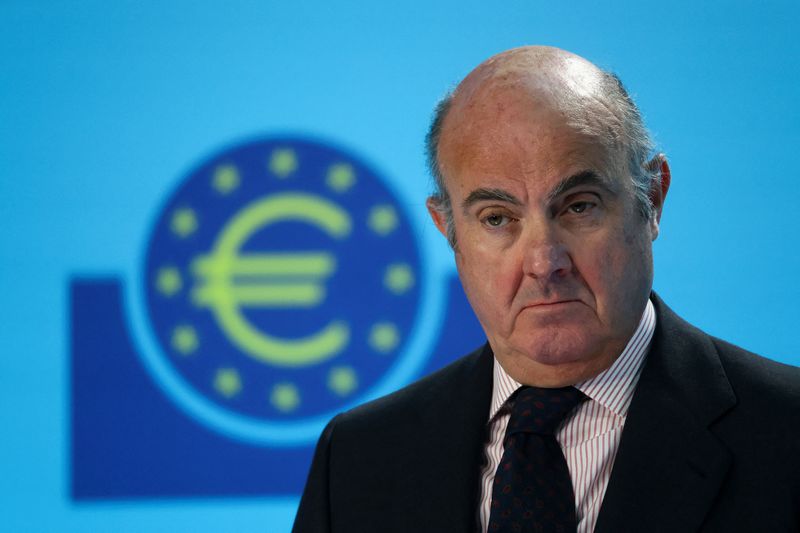By Balazs Koranyi and Francesco Canepa
FRANKFURT/WASHINGTON (Reuters) -The European Central Bank made it clear on Thursday that an interest rate cut is coming in June but policymakers continued to differ on moves thereafter or how low interest rates can go before once again starting to stimulate the economy.
The ECB put a June rate cut on the table last week and has spent the past week reinforcing that guidance, despite rising oil prices, a weaker euro and bets that its biggest peer, the U.S. Federal Reserve, would delay its own rate cuts.
"I think that we have been crystal clear: if things continue as they have been evolving lately, in June we'll be ready to reduce the restriction of our monetary policy stance," ECB Vice President Luis de Guindos said on Thursday.
French central bank chief Francois Villeroy de Galhau said there was “a very large consensus” for a cut in June and even Klaas Knot, the hawkish chief of the Dutch central bank and Joachim Nagel, the Bundesbank president, were on board.
The comments only reinforce market expectations of unanimity about this initial step and the focus has already shifted to what happens in subsequent meetings.
This issue, however, continued to divide policymakers and Villeroy joined a small but growing group of governors explicitly arguing that July should not be off the table.
"When we say (we go) meeting by meeting, it can be at each following meeting," Villeroy told CNBC. "I don't think for example that we should concentrate our rate cards on the quarterly meetings when we have a new forecast."
ECB board member Piero Cipollone, Greece's Yannis Stournaras and Lithuania's Gediminas Simkus have all suggested one way or another that a cut in July could also be in play.
Knot, meanwhile, joined others in pushing back on talk about the summer and seemed to repeat his previous view that policy easing could coincide with quarterly projections.
Markets currently see rate cuts in June, September, and December, when new forecasts are published, and Knot cautiously backed those expectations.
"I'm not uncomfortable with such market pricing, but at the same time we don't pre-commit," Knot told Bloomberg TV. "We're data-dependent, we go meeting by meeting."
Villeroy argued that the ECB's 4% deposit rate has a long way to go before it stops restricting economic growth and reaches the so-called neutral rate.
"Our best estimates for the euro area is between 2% and 2.5%, so we still have ample room while remaining in restrictive territory, to ease and to cut rates," he said.
Portugal's Mario Centeno meanwhile argued that there was little debate among policymakers that an interest rate above 3% was still holding back growth and thus dampening inflation.

"I don’t know anybody who says the neutral rate is above 3%," he told Reuters. "How fast should we get there? We’ve got time."
All policymakers acknowledged that energy market volatility and geopolitical tensions were a risk to inflation but they argued that the impact has not been big enough so far to derail disinflation.